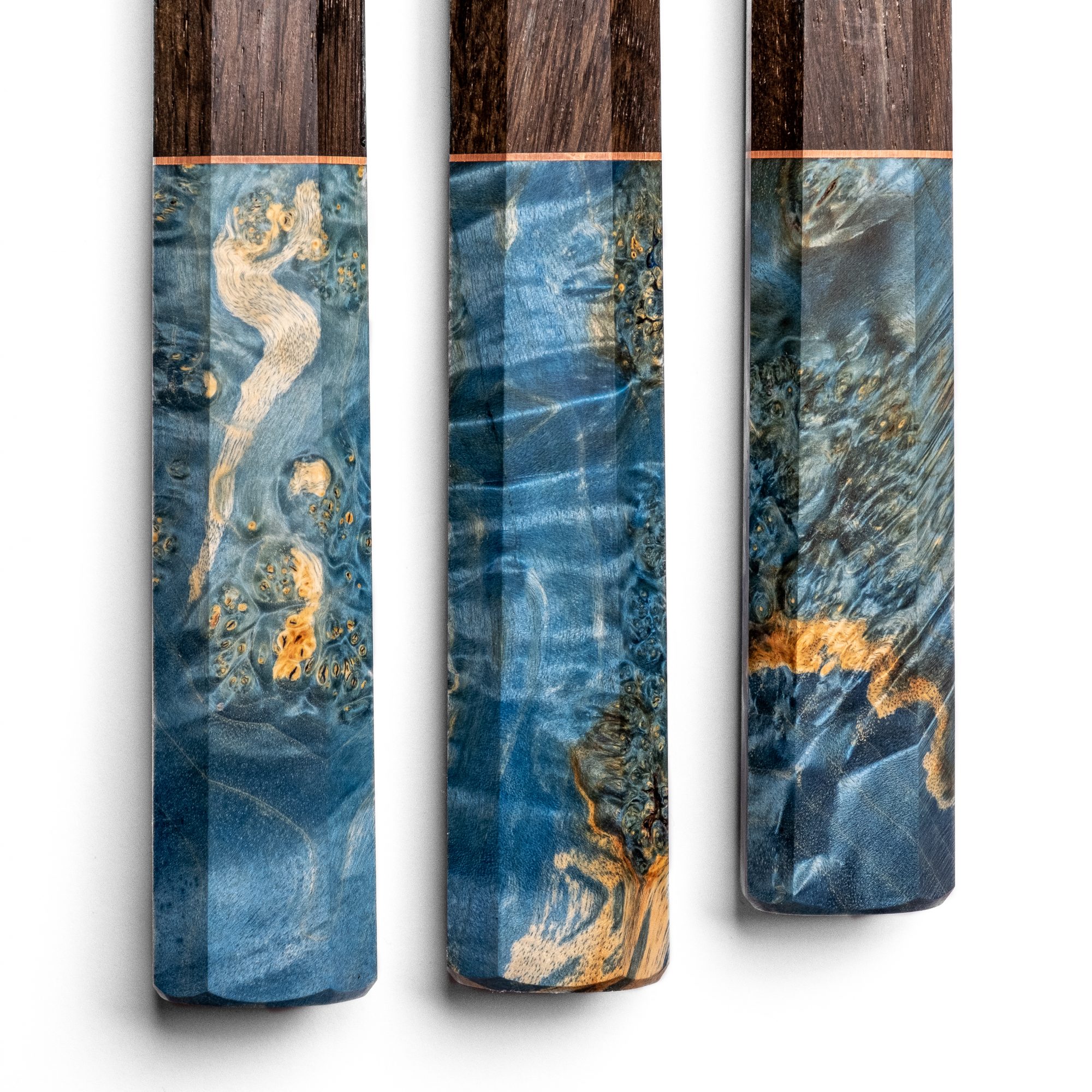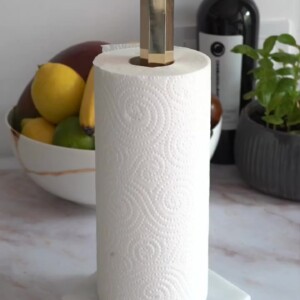Maple burl wooden handles of Japanese knives have been gaining popularity in recent years. As a team of foodies at Oishya, we understand the importance of investing in good quality knives that will last for years. In this article, we’ll explore the pros and cons of maple burl wooden handles and provide tips for those looking to purchase their own Japanese knife.
Pros of Maple Burl Wooden Handles:
Aesthetics: Maple burl wood is known for its intricate grain patterns and unique beauty. No two pieces of wood are alike, making each handle one-of-a-kind. If you’re looking for a knife that’s both functional and visually appealing, maple burl wood is a great choice.
Comfort: The natural contours of maple burl wood make it comfortable to grip and use for extended periods of time. Unlike plastic or metal handles, wood handles won’t slip or become uncomfortable due to moisture or heat.
Customisation: Maple burl wood is a popular choice for custom knife handles, allowing you to add a personal touch to your knife. Many knife makers offer custom handles made from a variety of wood types, including maple burl wood.
Cons of Maple Burl Wooden Handles
Durability: While maple burl wood is beautiful and comfortable to use, it may not be the most durable choice for a knife handle. If you’re someone who is hard on their knives, you may want to consider a handle made from a more durable material, such as G10 or Micarta.
Maintenance: Like all wood handles, maple burl wood requires some maintenance to keep it in good condition. You’ll need to oil the handle periodically to prevent it from drying out and cracking.
Price: Maple burl wood is a premium material, and knives with maple burl wood handles can be more expensive than those with other types of handles. However, if you’re someone who values aesthetics and comfort, the extra cost may be worth it.
Tips for Purchasing a Japanese Knife with a Maple Burl Wooden Handle
Consider your budget: As mentioned, knives with maple burl wooden handles can be more expensive than those with other types of handles. Determine how much you’re willing to spend before you start shopping.
Choose a reputable knife maker: There are many knife makers out there, but not all are created equal. Choose a maker who has a reputation for making high-quality knives with durable handles.
Look for a comfortable grip: When shopping for a Japanese knife, look for one with a handle that feels comfortable in your hand. Maple burl wooden handles are naturally comfortable, but you’ll want to make sure the knife feels balanced and easy to use.
Consider the blade material: The handle is important, but so is the blade material. Look for a knife with a blade made from high-quality steel that will hold a sharp edge and be easy to sharpen when needed.
Take care of your knife: Once you’ve invested in a Japanese knife with a maple burl wooden handle, it’s important to take care of it. Keep the blade sharp and oil the handle periodically to prevent it from drying out.
Investing in a high-quality Japanese knife with a maple burl wooden handle can be a great addition to any kitchen. Not only are they visually appealing, but they’re also comfortable to use and can last for years if properly cared for. Consider your budget, choose a reputable knife maker, and look for a comfortable grip and high-quality blade when shopping for your own Japanese knife. With a little care and maintenance, your knife will be a cherished kitchen tool for years to come.


























